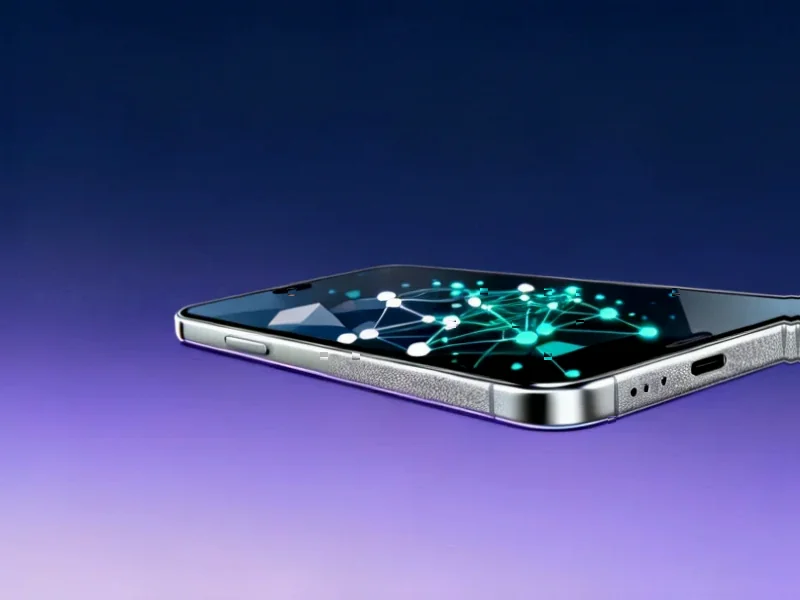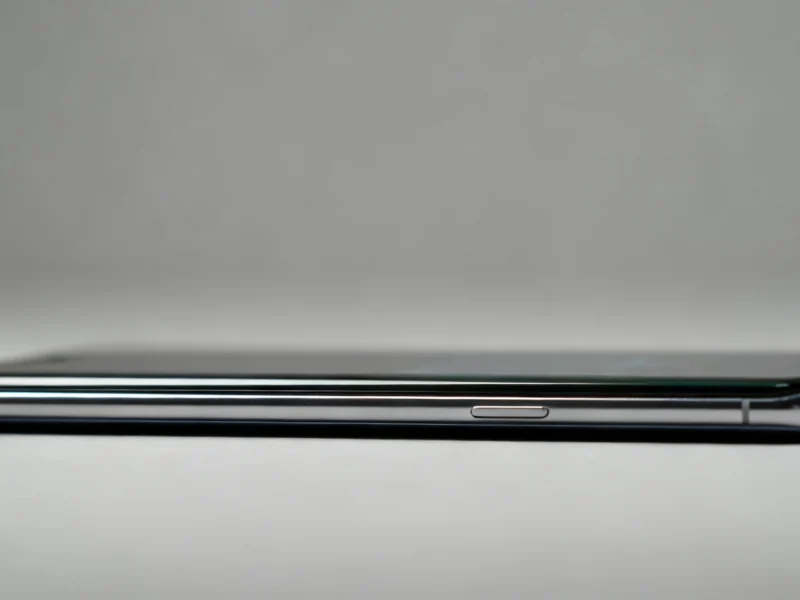According to Digital Trends, Samsung recently unveiled its first tri-folding smartphone, the Galaxy Z TriFold, at the K-Tech Showcase held alongside the Asia-Pacific Economic Cooperation CEO Summit. The device features two inward-folding mechanisms that transform it into a 10-inch tablet, with reported thickness measurements of approximately 4.2mm when unfolded and between 12-14mm when folded. This puts the tri-folding device on par with Samsung’s current slimmest foldable, the Galaxy Z Fold 7, and potentially thinner than older models like the Fold 4 and Fold 3. The company appears to be taking cautious development steps toward creating a mechanically robust tri-folding phone, though initial availability may be limited to select regions. This engineering achievement raises important questions about the future of foldable technology.
Table of Contents
The Durability Dilemma
While Samsung’s ability to achieve 4.2mm thickness across three folding panels represents significant engineering progress, the durability implications cannot be overstated. Each additional folding mechanism introduces new failure points—additional hinges, more complex wiring for displays and sensors, and increased stress on flexible OLED panels. The fundamental challenge with smartphone durability in foldable designs isn’t just thickness, but maintaining structural integrity across multiple bending points. Early foldables faced significant reliability issues, and tri-folding designs essentially triple the complexity. The reported measurements from the Korea Economic Daily suggest Samsung may be prioritizing slimness over robustness in this prototype phase.
A Niche Within a Niche
Samsung’s apparent strategy of limited regional launch for the tri-fold speaks volumes about its market expectations. The current foldable market remains a premium segment within the broader Samsung Galaxy lineup, and tri-folding devices would represent an even more specialized category. The practical use cases for a device that transforms from phone to tablet to larger tablet remain unclear. While the expanded screen real estate could appeal to productivity users, the added bulk when folded and potential battery life compromises create significant user experience trade-offs. This cautious approach mirrors how Samsung initially tested the waters with first-generation foldables before broader market releases.
Beyond the Spec Sheet
The focus on thickness comparisons with existing foldables misses the larger competitive picture. While Samsung appears to be benchmarking against its own products, the real competition isn’t just about millimeters—it’s about creating compelling user experiences that justify the premium pricing. The tri-folding concept must demonstrate clear advantages over carrying both a phone and tablet, or using a device with a single folding mechanism. Software optimization becomes exponentially more challenging with three distinct screen configurations, and app developers would need to support yet another form factor in an already fragmented market. The success of this category will depend on ecosystem support, not just hardware innovation.
The Production Hurdles
Bringing a tri-folding device to mass production presents manufacturing challenges that make current foldable production look straightforward by comparison. Yield rates for flexible displays decrease with each additional folding mechanism, and the precision required for aligning three panels perfectly creates new quality control hurdles. The hinge mechanism alone represents a significant engineering achievement, requiring multiple synchronized moving parts that must withstand thousands of folding cycles. These manufacturing complexities inevitably translate to higher costs, potentially positioning tri-folding devices as ultra-premium products even within the already premium foldable category.
Samsung’s Broader Ambitions
This prototype reveals Samsung’s long-term strategy to maintain leadership in the flexible display market. By pushing the boundaries of what’s possible with folding technology, Korean manufacturers like Samsung can establish technical benchmarks that competitors must match. The development work on tri-folding devices likely yields innovations that benefit their entire foldable lineup, from improved hinge designs to more durable flexible materials. As part of APEC regional technology showcases, Samsung also demonstrates its commitment to maintaining technological leadership in premium mobile segments, even as competition intensifies in mid-range markets.
The Road Ahead
While the Galaxy Z TriFold prototype represents impressive engineering, its path to becoming a commercially viable product remains uncertain. The technology must overcome significant durability, cost, and usability challenges before reaching mainstream adoption. Early adopters will likely face premium pricing and potential reliability concerns, similar to the first generation of foldables. However, the continued investment in folding technology suggests Samsung sees this as a critical future direction for mobile computing. The real test will come when users can evaluate whether the benefits of additional screen real estate outweigh the compromises in portability, battery life, and durability.



